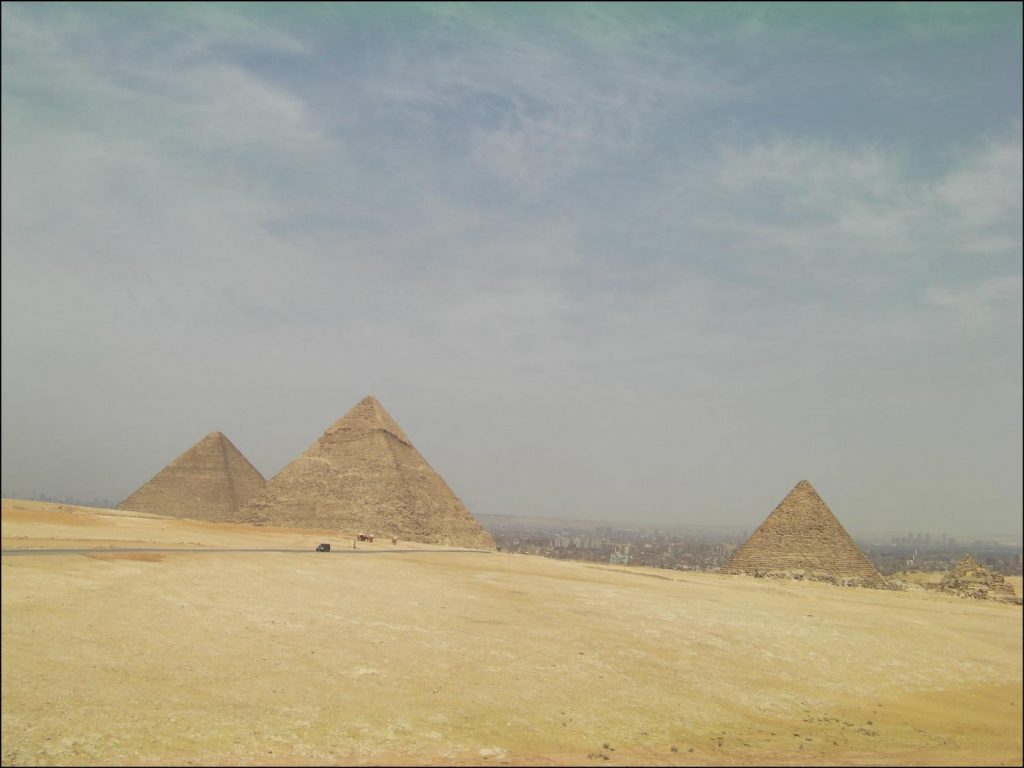USU-CEU Prehistoric Museum hosts lecture
“Up the Nile Without a Paddle” by Blaine and Pam Miller is the Castle Valley Archaeological Society’s October lecture at 7 p.m. on Thursday, Oct. 21 in the USU-CEU Prehistoric Museum classroom. Pam Miller will be assisting him in discussing their recent tour of Egypt in May 2010.
“We traveled by plane, cruise ship (like a paddle ship without the paddle), felucca (traditional Nile sailboat), and night train,” Pam said.
“Egypt has tourism police because the safety of tourists is a priority for them. Tourism is the second largest industry in Egypt behind the oil industry.

“Up the Nile Without a Paddle” by Blaine and Pam Miller is the Castle Valley Archaeological Society’s October lecture at 7 p.m. on Thursday, Oct. 21 in the USU-CEU Prehistoric Museum classroom. Pam Miller will be assisting him in discussing their recent tour of Egypt in May 2010.
“We traveled by plane, cruise ship (like a paddle ship without the paddle), felucca (traditional Nile sailboat), and night train,” Pam said.
“Egypt has tourism police because the safety of tourists is a priority for them. Tourism is the second largest industry in Egypt behind the oil industry.
“We had an armed guard with us all the time and every hotel had armed guards at the entrances along with the metal (and perhaps bomb?) detectors.
“In spite of or because of all the guards and police we felt safe. Our hotel was next door to the Syrian Embassy and across the street from the Iranian and Korean embassies.
“The most difficult thing to get used to was the market place or bazaar located at every heritage site.
“The Egyptian government doesn’t really regulate these but provides the space for shop keepers to display their wares.
“They are very persistent salespersons; most of the time we felt like we were being mobbed — talk about high pressure sales!
“We visited a papyrus factory, a rug factory, a perfume factory, and a cotton shop, and were treated to demonstrations on how these various crafts were made. We drank hot hibiscus tea because the Egyptians believe it cools the body down in hot weather.
“We rode camels along the Nile on the way to a Nubian village across the river from the city of Aswan. Getting on the camels wasn’t so hard, but dismounting in a dignified manner was more of a challenge.
“The Nubian villagers raise crocodiles in their homes because the waters of Lake Nasser have changed their natural environment. They let them go in the lake when the crocodiles become adults.
“We visited the pyramids of Giza and Saqqara, the ancient city of Memphis, Valley of the Kings where we saw Tut’s mummy in his tomb, Valley of the Queens and Hatshepsut’s Temple, Temples at Karnak, Luxor, Komombo, Abu Simbel and others.
“Of course the national museum in Cairo was amazing and we saw the mummy room along with Tut’s treasures and at least a million scarabs and sarcophagi,” Pam said.
The Millers are archaeologist who have worked to make sure that the prehistory of Utah will be preserved for future generations. They became the Utah Statewide Archaeological Society advisors for the Castle Valley Chapter in 1985.
Blaine is an archaeologist for the Bureau of Land Management for the Price Field Office. He is from Layton, Utah.
He originally majored in history education at Weber State College, but after taking a field trip to Southern Utah, he became intrigued with the archaeology he saw being done there. He decided to change his major and become an archaeologist.
Pam is from Wyoming and became an archaeologist while attending Brigham Young University. While there she became interested in the Anasazi and Fremont cultures.
She met Blaine during an archaeological project in Southern Utah. They began to work on several archaeological projects together and were married in 1974. They have five children and live in Price.
She teaches anthropology at USU-CEU. Dr Miller has always wanted to be an archaeologist since the third grade. One day in 1959, she saw a picture of the work being done to disassemble the monuments of Abu Simbel (Temple of Ramses II) in order for them to be taken to higher ground to save them from the rising waters of the Aswan Dam in Egypt.
She has always wanted to visit there. The reality of her dream came true in May 2010 when she and a group of students along with her family made the trip.




